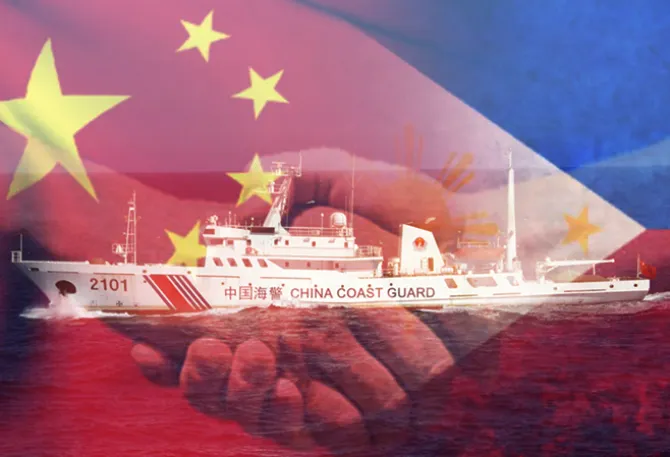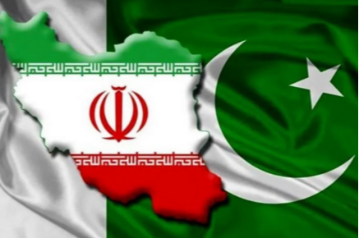
On 22 October, a Chinese Coast Guard (CCG) ship collided with a Philippine resupply vessel within the Southeast Asian country’s exclusive economic zone (EEZ). Interestingly, the Chinese Embassy in Manila also released an official statement within the day, highlighting how the CCG took “necessary measures according to law” against the Philippine resupply vessel, which was accused of “illegally” delivering construction materials to the ageing BRP Sierra Madre on the Ayungin Shoal in the West Philippine Sea. The incident came after a string of similar incidents within the month, which involved near-collisions between the CCG and a Philippine Coast Guard (PCG) vessel on 6 October and a Philippine Navy (PN) ship on 13 October.
Provocations by the CCG in the Philippine EEZ are part of a continuous pattern that has been in effect for the past two decades. However, the frequency and nature of its activities for this month alone illustrate a trend towards escalation. While it is evident that Manila’s strengthening ties with the United States (US) is a cause for concern for Beijing, pushing it to cement its sphere of influence in the disputed maritime territory, it is equally important to take a more holistic look at the surrounding developments taking place in the international geopolitical landscape.
Provocations by the CCG in the Philippine EEZ are part of a continuous pattern that has been in effect for the past two decades.
This direct provocation by China can be viewed in the context of the broader contours of international politics. Looking at its historical track record since the end of the Cold War, Beijing has been known to take advantage of and utilise any opportunity it can get to solidify its sphere of influence in the Western Pacific, at the expense of US leadership and the sovereignty and sovereign rights of its immediate neighbours, such as the Philippines. When US troops withdrew from the Subic Naval Base in 1992, Beijing saw this as an opportunity to pursue its expansive regional ambitions, leading to the occupation of Mischief Reef in 1995. It is important to note that the area is within the Philippine EEZ and a traditional fishing area for Filipino fishermen.
With the turn of the 21st century, Washington’s preoccupation with its global war against terror in the Middle East and the 2008 Financial Crisis, which constrained the Western economy, motivated Beijing to pursue its major power ambitions more vehemently in the Western Pacific. Along with increasing its military budget to double digits, China began engaging more assertively with its Southeast Asian neighbours, including the Philippines. In 2011, at least six major incursions by Chinese forces into the Philippine EEZ occurred. These events eventually led to the notorious Scarborough Shoal maritime stand-off between both countries in 2012, which also occurred within the Philippine EEZ. This resulted in China’s de facto occupation of the territory. It is also important to highlight that in 2009, Beijing officially presented its nine-dash line map to the United Nations to legitimise its expansive territorial interests.
Washington’s preoccupation with its global war against terror in the Middle East and the 2008 Financial Crisis, which constrained the Western economy, motivated Beijing to pursue its major power ambitions more vehemently in the Western Pacific.
Today, as the US-China power competition intensifies, Manila has illustrated its desire to secure its territorial integrity, sovereignty, and sovereign rights by enhancing its alliance with Washington. Such developments have impeded Beijing's desire to project more power and alter the status quo order in the region. However, the speed at which China has escalated its assertive manoeuvres in the West Philippine Sea this month aligns with the broader context of contemporary international geopolitics.
While the ongoing war in Ukraine has significantly tested Washington’s commitment in the Indo-Pacific, a new front is now emerging amidst the unfolding conflict between Israel and Hamas, catalysed by attacks by Hamas on Israel on 7 October, resulting in over 1,400 fatalities. Additionally, the spiralling conflict could now escalate further and spill over throughout the greater Middle East and North Africa (MENA) region. The MENA is often regarded as a core interest of the US, given its role as a traditional security provider and partner of several regional countries, including Israel. The US immediately acted by sending its warships and aircraft to the region. In fact, within hours of the attack, The USS Gerald R. Ford carrier strike group was sent to the Eastern Mediterranean. With the US military now being pressed on two fronts, it is likely for Beijing to turn these conflicts into opportunities to pursue its interests in the Western Pacific.
The speed at which China has escalated its assertive manoeuvres in the West Philippine Sea this month aligns with the broader context of contemporary international geopolitics.
As Washington requested a budget of US$ 105 billion from Congress for its security engagements worldwide, it is interesting to note how Ukraine and Israel were allotted US$ 61 billion and US$ 14. 3 billion respectively, while the Indo-Pacific only received a meagre US$ 2-billion package. Such disproportion can raise concerns amongst its Indo-Pacific allies and partners, given that China is constantly altering the regional status quo order through assertive manoeuvres at the expense of international law and regional countries’ sovereignty and sovereign rights. In addition, China's material capabilities vastly outweigh those of Russia and Iran combined.
The inconsistent approach of the US towards the Western Pacific since the turn of the century has provided several benefits for China at the expense of its Southeast and East Asian neighbours. In fact, amidst the Israel-Hamas conflict, state-controlled media reports in China have pointed to how the US is overstretching its capabilities on multiple fronts, eventually causing it to be “bogged down”. China has exploited these extra-regional security developments as a calculative power move to gauge how far it can go in pursuing its revisionist goals in the South China Sea. Therefore, the collision that took place on 22 October is a representation of this practical evaluation by Beijing. In a scenario where Washington will remain preoccupied with Europe and MENA, Beijing will likely take advantage of these inconsistencies to achieve its narrowly-driven interests.
The inconsistent approach of the US towards the Western Pacific since the turn of the century has provided several benefits for China at the expense of its Southeast and East Asian neighbours.
Manila must, therefore, pursue a multi-aligned foreign policy that focuses on deepening and broadening security and economic relations with like-minded traditional and non-traditional partners to widen its strategic options and ensure more political flexibility amidst the rising pressures from Beijing in the West Philippine Sea. While no other country comes close to the US in serving as a security partner of the Southeast Asian country, the Philippines must proactively expand and diversify its external network to serve as a strategic buffer given the future uncertainty of regional geopolitics.
Don McLain Gill is a Philippines-based geopolitical analyst, author, and lecturer at the Department of International Studies, De La Salle University (DLSU).
The views expressed above belong to the author(s). ORF research and analyses now available on Telegram! Click here to access our curated content — blogs, longforms and interviews.




 PREV
PREV


